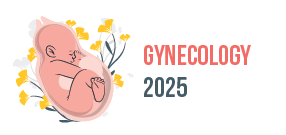Gynecology 2025

Calderdale and Huddersfield NHS foundation Trust Hospital, UK
Abstract:
The objectives of this audit were to evaluate the OASI in our hospital over the last 1 year and to find out the incidence and risk factors of OASI and methods to reduce the incidence. The audit was retrospective and examined the case notes of all patients who sustained anal sphincter injuries after vaginal delivery over this one year period. Total number of OASI over the 1 year period was 57 cases (total vaginal deliveries including instrumental deliveries were 2736). We analysed the demographic date of women who had OASI, reviewed the mode of delivery, operator status at the time of delivery and reviewed the use of episiotomy. The most common type of sphincter injury was type 3B (49.1%), which involves more than 50 percent of external anal sphincter (EAS). Fourth degree tear, which is a complex sphincter injury constituted 8.7%. None were associated with Keilland rotational forceps delivery. The risk factors of OASI were direct occipeto- posterior position, shoulder dystocia, sequential use of instruments, tight perineum, compound presentation, short perineal body and quick delivery of fetal head. Our recommendations were:1. The importance of antenatal counselling regarding OASI and it’s impact on the quality of life.2. The importance to assess the perineum prior to delivery to identify short perineal body, scarred or tight perineum.3. Adequate training for the staff in performing episiotomy at the correct angle and suturing.4. To continue giving manual perineal protection (MPP) till the delivery of baby’s shoulders. 5. Ask for help in supporting the perineum, if needed.
Biography:
Dr.Lovely Thomas has completed her MBBS from Government Medical College, Trivandrum, Kerala, India followed by post- graduation ( MS OBGY) in the subject of obstetrics and gynaecology at Government Medical College , Trivandrum, Kerala ,India. She has gained experience working in various regions of Kerala following her post-graduation. She has successfully cleared Member of Royal College of Obstetrician and Gynaecologists (MRCOG) and is currently employed in the UK.
